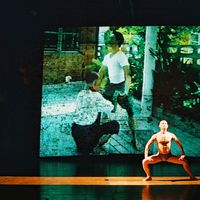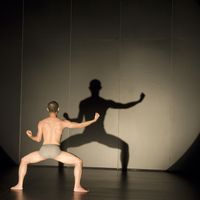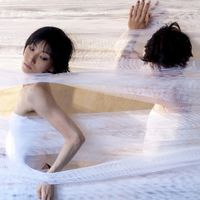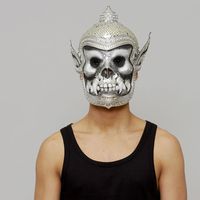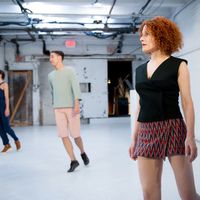Interview: Thai choreographer
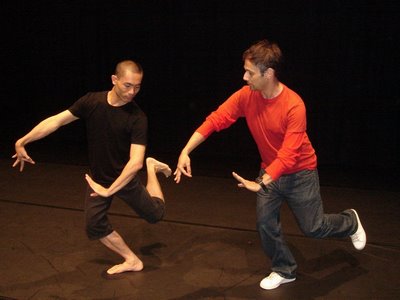 [caption id="attachment_2864" align="alignright" width="270" caption="Image from 'Pichet Klunchun and Myself': www.powerofculture.nl"]
[caption id="attachment_2864" align="alignright" width="270" caption="Image from 'Pichet Klunchun and Myself': www.powerofculture.nl"] [/caption]
[/caption]Part 2: Interview in Thailand with Pichet Klunchun Interview with Pichet Klunchun
I met Pichet at in Jakarta, Indonesia in July 2009 at a conference hosted by the Goethe Institut for Asian and European performing arts practitioners. As I held strong feelings for him as a performer, I directly asked the thoughts that have been lingering in my mind about the prestigious 'Routes' ECF Princess Margriet Award for Cultural Diversity that he received together with French artist, Jerome Bel for their work “Pichet Klunchun and Myself.” An initiative of the European Cultural Foundation, the purpose of the award is to honor artists and thinkers in the field of cultural diversity for helping to combat fear and disrespect of 'the other'.
Pichet Klunchun bridges traditional Thai Classical Dance language with contemporary sensibility, while keeping the heart and wisdom of the convention.
He earned domestic notoriety for his efforts in contemporising Khon. He also recently premiered “Ganesh,” a piece that he had been working on for over two years. In his notes, Pichet eloquently pointed “In our world, there are distortions, concealing of facts and addiction to power. When recipients of a message change, the messages must also be changed appropriately, as well as the correspondents.”
The interview with one of Thailand’s foremost contemporary choreographer and performer, was conducted by email.
Vanini: As someone who has constantly been exposed to different cultures and working in a multi-cultural environment, could you give concrete examples how this has influenced your work as a choreographer/performer?
Pichet: Working in multi-cultural environment has influenced me in the way that I have to be very strong and stable in what and who I am. I have to maintain myself the way I am. I really like this environment. It helps me see myself clearly.
Vanini: After extensively touring and working with Jerome Bel on the piece “Pichet Klunchun and Myself,” what would you say are the distinct differences or even similarities in working with a European in comparison to working with Thai or Asian artists? Or even audience reception?
Pichet: I think it is hard to give a conclusion on this topic. When I was on tour with Jerome, I was working with "Jerome". I don't believe that "Jerome" represents "Europeans". However, in terms of theater management once we are in the theater, I think it is very similar everywhere in professional theatres. Sometimes, I hardly know where I am because everything looks the same.
Vanini: What would you say are your most valuable experiences in working in Europe and working with a European artists like Jerome Bel? What specific influences or inspirations have you taken from Jerome or your years of working with him in your own work?
Pichet: What I got the most from Jerome is the analytical thinking on artistic works. The process of analysing things systematically is clearer. In Thailand, artists often use social status and government policies as the main factor in creating work, which doesn't make any sense.
Vanini: How has the work in Europe impacted your work in Thailand or anywhere else as choreographer/performer? Would you say that this has opened doors in the understanding of “Khon” in Thailand in particular? If so, would you share how do you feel (or even measure) that you moved towards the realisation of your vision of making it known to the younger generation of people in Thailand?
Pichet: To work in European countries didn't make Thai people understand Khon. However, it made them start asking questions like why Khon can communicate with the European people. Thai people consider Khon as their national heritage, but they don't feel interested. As a result, after I worked so hard in Europe presenting Khon, now Thais start to be interested in what I am doing, but not necessarily with Khon. In my work, I always add the knowledge of Khon and try to explain it in order to lead them back to Khon performance in the future.
Vanini: You noted in Ganesh that “ Whenever a work of art does not reflect our contemporary situation or the concerns of our live, will it be worthwhile? (Personally, I don’t believe it will)” – may I ask if you could elaborate further on this statement.
Pichet: I try to make art that works as part of a society or people's lives. Once it is a part of the society, people will protect and support the arts. In the past, the arts always had been a part of society. However, after Thailand was Westernised by globalisation, there were new vocabularies such as "modern" and "outdated", or "new" and "old", the separation of art and the society then occurred.
Vanini: What’s your next project?
Pichet: We are working on the Nijinski Project which will be presented next year. We also plan to tour Khon performance in Thai schools to educate young generation about Khon performance.
>>Back to main interview article: Asia-EU performing arts: cultural influences
>>Interview with German theatre director/choreographer, Helena Waldmann
Image source: www.powerofculture.nl
About the Writer:
Vanini Belarmino is the contributor for Performing Arts Asia for culture360.org. She is a Berlin-based producer and curator specialising in interdisciplinary exchange and cross-border collaborations. She is the Founder and Managing Director of Belarmino&Partners, an international project management and promotions consultancy for arts and culture.
Similar content
29 Oct 2018
from - to
29 Oct 2018 - 29 Oct 2018
01 Dec 2009
09 Nov 2009
from - to
17 Apr 2013 - 30 Sep 2013

